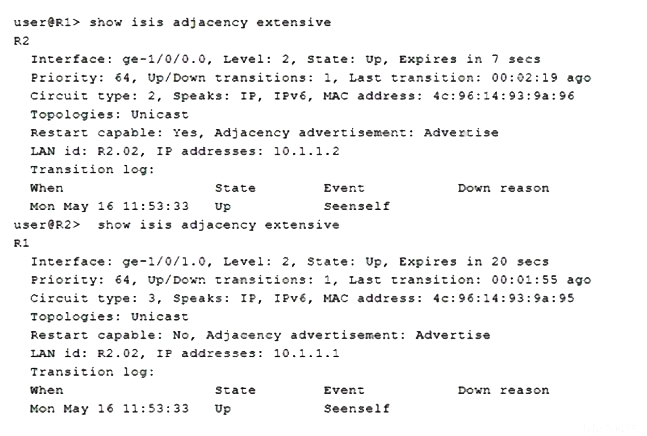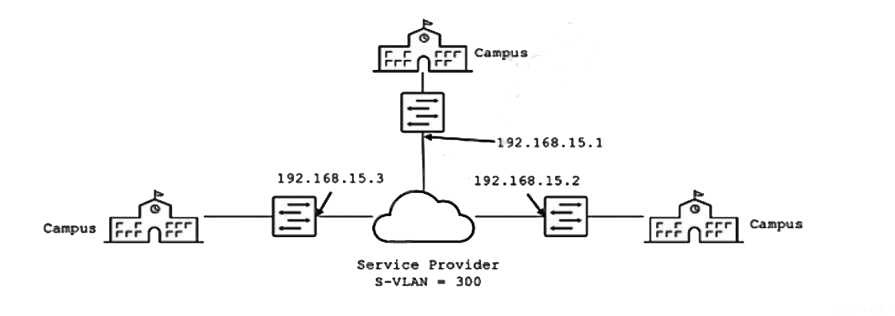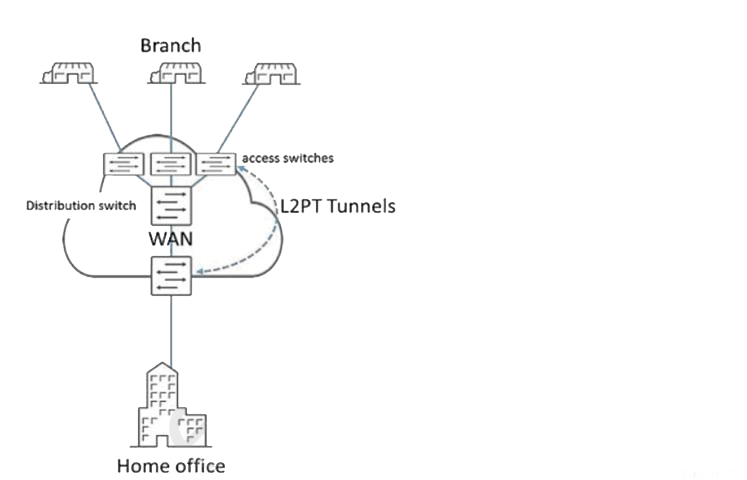Juniper JN0-649 Enterprise Routing and Switching, Professional JNCIP-ENT Exam Practice Test
You are deploying an 802.1X solution and must determine what would happen if clients are unable to re-authenticate to the RADIUS server.
In this scenario, which configuration would provide access to the network if the supplicant is already authenticated?
Answer : D
Referring to the outputs shown in the exhibit, which two statements are correct about the IS-IS adjacency? (Choose two.)

Answer : A, D
You must ensure that all routes in the 10.0.0/8 address range are not advertised outside of your AS.
Which well-known BGP community should be assigned to these addresses to accomplish this task?
Answer : A
For specifying the BGP community attribute only, you also can specify community-ids as one of the following well-known community names defined in RFC 1997:
no-advertise---Routes containing this community name are not advertised to other BGP peers.
no-export---Routes containing this community name are not advertised outside a BGP confederation boundary.
no-export-subconfed---Routes containing this community are advertised to IBGP peers with the same AS number, but not to members of other confederations.
llgr-stale---Adds a community to a long-lived stale route when it is readvertised.
no-llgr---Marks routes which a BGP speaker does not want to be retained by LLGR. The Notification message feature does not have any associated configuration parameters.
You want to provide Layer 2 connectivity between campus sites using Ethernet switches through a metro Ethernet service provider who is using Q-in-Q tagging on their network.
Referring to the exhibit, what are two design considerations in this environment? (Choose two.)

Remote branches connect to the corporate WAN through access switches. The access switches connect to access ports on the WAN distribution switch, as shown in the exhibit. L2PT has previously been configured on the tunnel Layer 2 traffic across the WAN. You decide to move the L2PT tunnel endpoints to the access switches. When you apply the L2PT configuration to the access switches, the ports that connect the access switches to the distribution switch shut down.
Which action would solve this problem?

You are implementing the route summarization feature of OSPF.
Which two results do you achieve in this scenario? (Choose two.)
Answer : B, C
OSPF inter-area route summarization reduces the routing information exchanged between areas and the size of routing tables, and improves routing performance. OSPF inter-area route summarization enables an ABR to summarize contiguous networks into a single network and advertise the network to other areas.
You want to create an OSPF area that only contains intra-area route information in the form of Type 1 and Type 2 LSAs.
In this scenario, which area is needed to accomplish this task?
Answer : B
A totally stubby area (TSA) is a stub area in which summary link-state advertisement (type 3 LSAs) are not sent. A default summary LSA, with a prefix of 0.0. 0.0/0 is originated into the stub area by an ABR, so that devices in the area can forward all traffic for which a specific route is not known, via ABR.